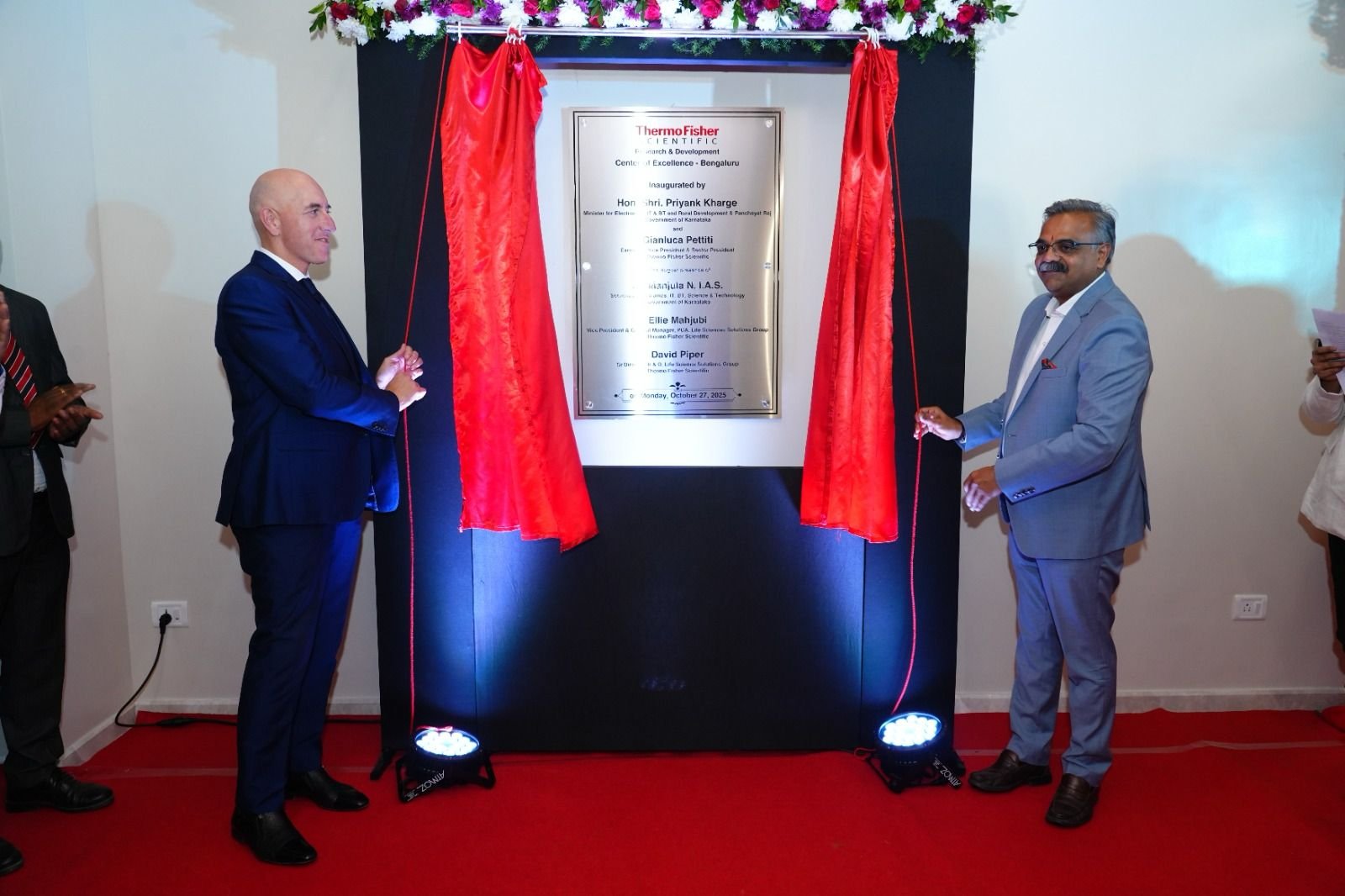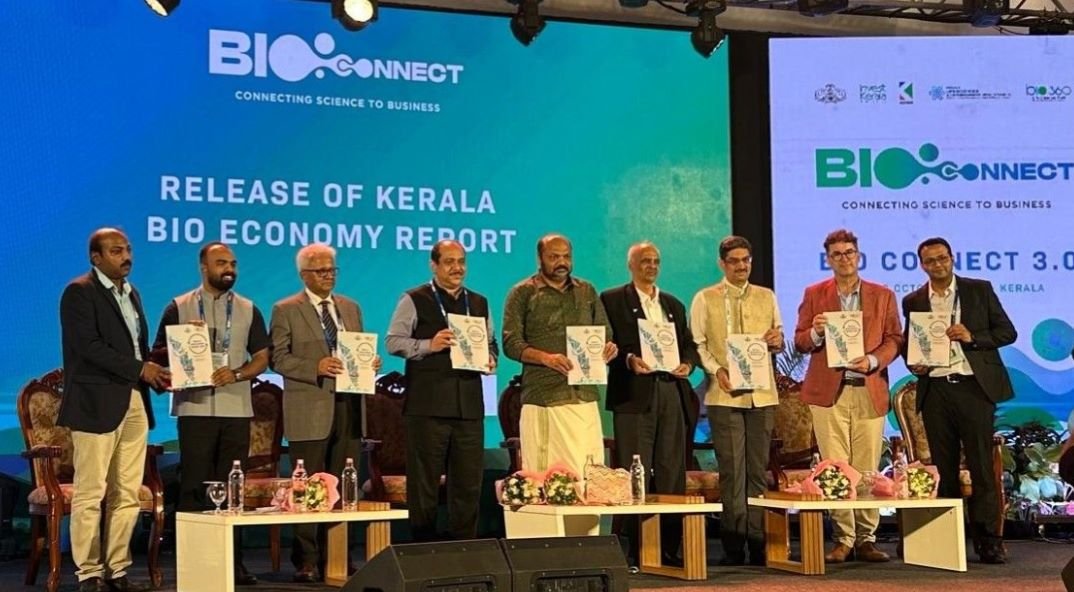Unlocking Future of Large and Small Molecule Pharma R&D with Science-Driven Digital Solutions
April 30, 2025 | Wednesday | Views | By Dr Manish M Khandagale, Senior Field Application Specialist, Revvity Signals Software Team
Digital platforms that can be tailored to the specific requirements of the varied Indian pharmaceutical market present tremendous potential to maximise R&D for both large and small molecules, hence enhancing India's position in this dynamic global pharmaceutical industry.
As pharmaceutical companies expand their R&D operations globally, Indian Contract Development and Manufacturing Organisations (CDMOs) are attracting significant investment.
In recent years, India has emerged as a leader in the production of generic small molecules. In 2023, the India small molecule CDMO market generated a revenue of $6.8 billion, and a compound growth rate of 9 per cent is expected by 2030. However, large molecules, also known as biologics, are now also taking root. Attracting considerable investment, the development of biologics and biosimilars (highly similar copies of approved biologics) is creating new streams of revenue generation in India. The Indian large molecule CDMO market is set to double over the next few years, from a revenue of just below $1 billion in 2023 to $2 billion by 2030.
Key Digital Technologies Empowering Pharma R&D
Digital transformation has become a cornerstone for advancing pharmaceutical R&D over the last few years. By integrating advanced digital platforms, pharma companies can reduce costs, increase response time, enhance stakeholder communication, and create robust chains of identity and custody. These digital tools also deliver new insights that were previously unavailable, providing data that helps executives drive continuous improvement. Given the global nature of the industry, digital platforms are now essential for both efficiency and scalability.
The technological revolution in drug discovery has generated vast and complex datasets, which can be mined and analysed for multiple purposes. To make this possible, digital platforms that can aggregate R&D data from multiple sources and then provide a unified resource that can be analysed and interpreted will offer significant competitive advantage, helping streamline drug development from discovery through to market.
Alongside data handling, fully integrated platforms also support automation of the time- and cost-intensive experimental processes and workflows. Solutions include automating liquid handling, synthesis/bioreactor processes, and high-throughput screening, to name but a few. These techniques offer the potential to reduce development time and cut operational costs while simultaneously improving research quality and enhancing reproducibility.
Advanced data analytics, AI, and machine learning are increasingly being used to optimise production processes, interpret data, identify novel drug targets, and assess molecules under development. Real-world deployments are already showing how digital modelling can accelerate production timelines and create efficiencies in areas such as identifying promising drug candidates, drug molecular design, retrosynthetic analysis, or information flow between clinical trial and manufacturing units.
Benefits of Science-Driven Digital Transformation
Digital transformation delivers measurable benefits in pharmaceutical drug discovery R&D, including:
Accelerated development timelines: By automating many of the manual and routine R&D tasks, digital platforms help to vastly accelerate the "Design-Make-Test-Decide" cycle in drug discovery. These advances have the potential to reduce human error, improve quality control, and free up researchers’ time for more complex and critical tasks.
Improved candidate targeting: The availability of real-time data insights, based on the integration of automation, instrumentation, and analysis of vast data sets, enables precise molecule targeting. With an improved focus on likely drug candidates, companies can accelerate research programmes, cutting costs and reaching the market more rapidly.
Business scalability: Cloud-based digital solutions enable R&D projects to be rapidly scaled up and down to address very high computational demands.
Cost efficiency: Digital solutions can automate routine tasks such as data entry and report generation, streamline workflows, and help researchers to share data securely and efficiently to learn from others’ progress.
Enhanced compliance and traceability: Digital solutions enable automated real-time documentation with improved reproducibility and data integrity to facilitate compliance. Technologies that can track batch genealogy help overcome the challenges of monitoring product genealogy in today’s complex production environment. For small molecules, this might mean monitoring synthesis schemes, process routes, associated materials consumption tracking, and/or analytical data. For large molecules, it can include tracking processes from cell-line development and fermentation through to the downstream processing and purification stages.
Analysis of vast data stores: Digital solutions can access, store, and analyse huge quantities of data from multiple sources to create entirely new insights. Modern platforms that adhere to F.A.I.R. data principles (findable, accessible, interoperable, and reusable) help to deliver the maximum possible benefit from historic and current research, exploiting data assets to drive future drug discovery.
Artificial Intelligence (AI) and Machine Learning (ML): AI and ML rely on copious amounts of well-curated data to identify patterns and predict the efficacy of potential drug candidates, enabling researchers to prioritise the most promising compounds. Digital platforms, from automation to data warehousing, deliver the critical resources that fuel AI and ML innovation.
Collaborative data sharing and integration: Integrated digital platforms enable robust, reliable, and secure data exchange between pharma firms, CROs, CDMOs, and a multitude of international partners—in real time.
Case Studies and Applications in Indian Pharma
Hyderabad-based NATCO Pharma Limited, an industry leader in generic pharmaceuticals, selected Revvity Signals Notebook to unify its R&D processes, accelerate product development, and improve data audit trails. Signals Notebook provides a complete digital platform for NATCO. For example, the solution includes project codes and unique tracking numbers for new projects, inventory tracking, document management (such as R&D control procedures, protocols, and standard operating procedures), collaboration workflows (such as task and request management with review approval), and much more. The solution delivers immediate visibility of inventories for raw materials, control of instrumentation, and access to references and working standards. Signals Notebook integrates data from other digital tools, for example, permitting bidirectional data exchange with Empower instruments for high-pressure liquid chromatography (HPLC) and gas chromatography.
Also in Hyderabad, Dr. Reddy’s Laboratories (DRL) set up its biotechnology R&D business unit in 1999 and launched the first biosimilar product, Filgrastim, within 2 years, and many more biosimilars followed. DRL uses advanced simulation and modelling software to test new drugs virtually, digital twin technology to run virtual experiments and find the optimal production methods, and AI-enhanced standard operating procedures. By adopting digital tools, DRL has improved its operations and set a standard for innovation in healthcare.
Addressing Challenges with Present and Future Digital Integration
Competing in the global marketplace affects multiple business areas, from operational efficiency to process scalability, from collaboration to compliance. Digital solutions provide the flexibility, integration, and security to drive productivity, cut costs, and accelerate innovation—all key factors in gaining competitive advantage.
With the advent of cloud-based solutions, transitioning from paper and manual processes and from multiple independent systems to a unified platform is now considerably more cost-effective than in the past, with zero on-site deployments and no capital costs. In addition, these solutions offer a full audit trail, data backups, role-based data privileges, and compliance with certifications such as SOC 2 Type 2 and ISO 27001, helping to ensure security, confidentiality, and information security in the management of customer data.
Finally, as AI and ML in pharma R&D continue to gain momentum, enhanced data management will be an essential focus. Simultaneously, there will also be pressure to meet new standards laid down by regulators. To strengthen India’s role in this vibrant global pharma sector, digital platforms, which are customisable to the needs of the diverse pharma landscape of the Indian market, offer enormous potential to optimise large and small molecule R&D. Sustained digital transformation can foster a shift toward data-centric thinking among scientists, and position Indian pharma as a global leader in large and small molecule pharmaceutical R&D.
Dr Manish M Khandagale, Senior Field Application Specialist, Revvity Signals Software Team









